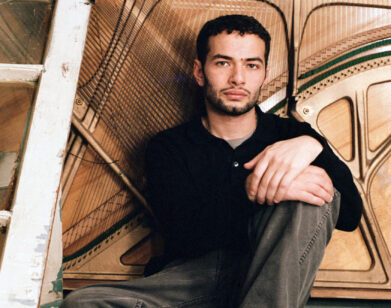Anj Smith’s True Nature
A prelude to the unveiling of its Chelsea Space, last night uptown Hauser & Wirth opened “The Flowering of Phantoms,” Anj Smith’s second show with the gallery. Smith told Interview of the show’s title, “It relates to the way language operates, with new meanings constantly evolving from old ones, and the implications this instability has for communication and belonging.”
Smith’s paintings are small and square, with intricately painted surfaces and classical themes. With impasto coming off the canvas, shining surfaces, and such a variety of textures, objects and meanings, Smith’s works are also vibrant and unusual. The title, she says, “celebrates painting post its ‘death’ and marks a current contemporary context for painting in relation to its rich, but past, history.”
The new works explore the relationship between portraiture and landscape. Collages of creatures and plants make up a human figure, and landscapes are covered in images from fashion and popular culture. In New Blooms at The Ossuary (2012), a landscape painting and Smith’s largest ever, it is difficult to differentiate human skulls from monkey skulls. Smith is bridging the divide between nature and man, the natural and the manmade.
In her work Smith questions the degree to which nature can be trusted. The artist paints androgynous figures, whose gender is decidedly unspecific, such as the figure in the The Sentry (2012), in which she depicts objects traditionally associated with femininity—lace, flowers—but gives them a dark twist. A cigarette butt covers an Alexander McQueen knuckleduster, and a spider is worn as a broach. The contradiction of pretty and frightening objects confuses traditional symbols. A pile of skulls is as much a memento mori as it is a print on a McQueen scarf. It is the frightening undertone of familiar things from popular culture and from history that creates such a sense of the uncanny in Smith’s work.
To coincide with the show, a new book about Anj Smith has been published by Hauser & Wirth.







